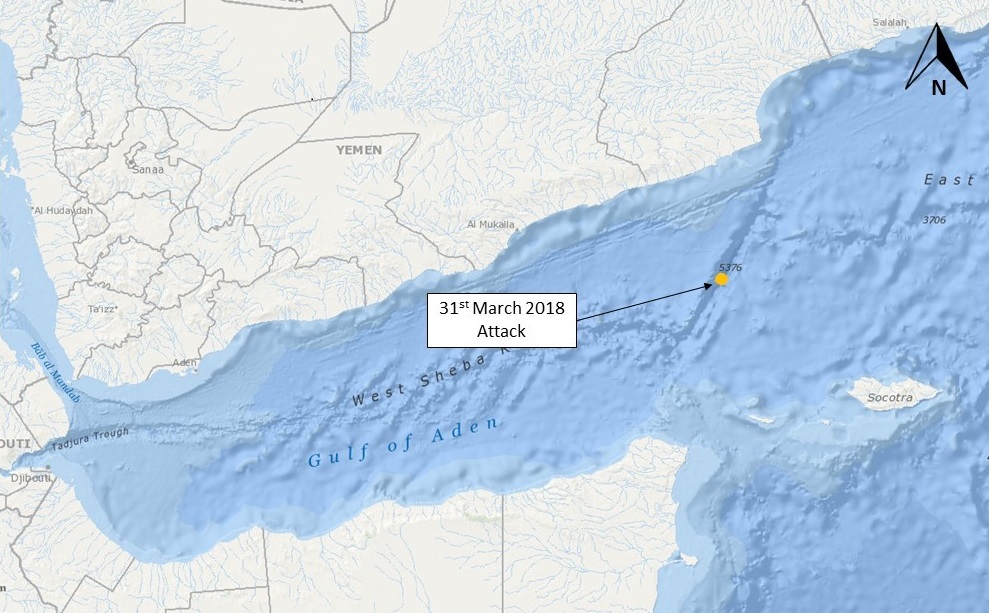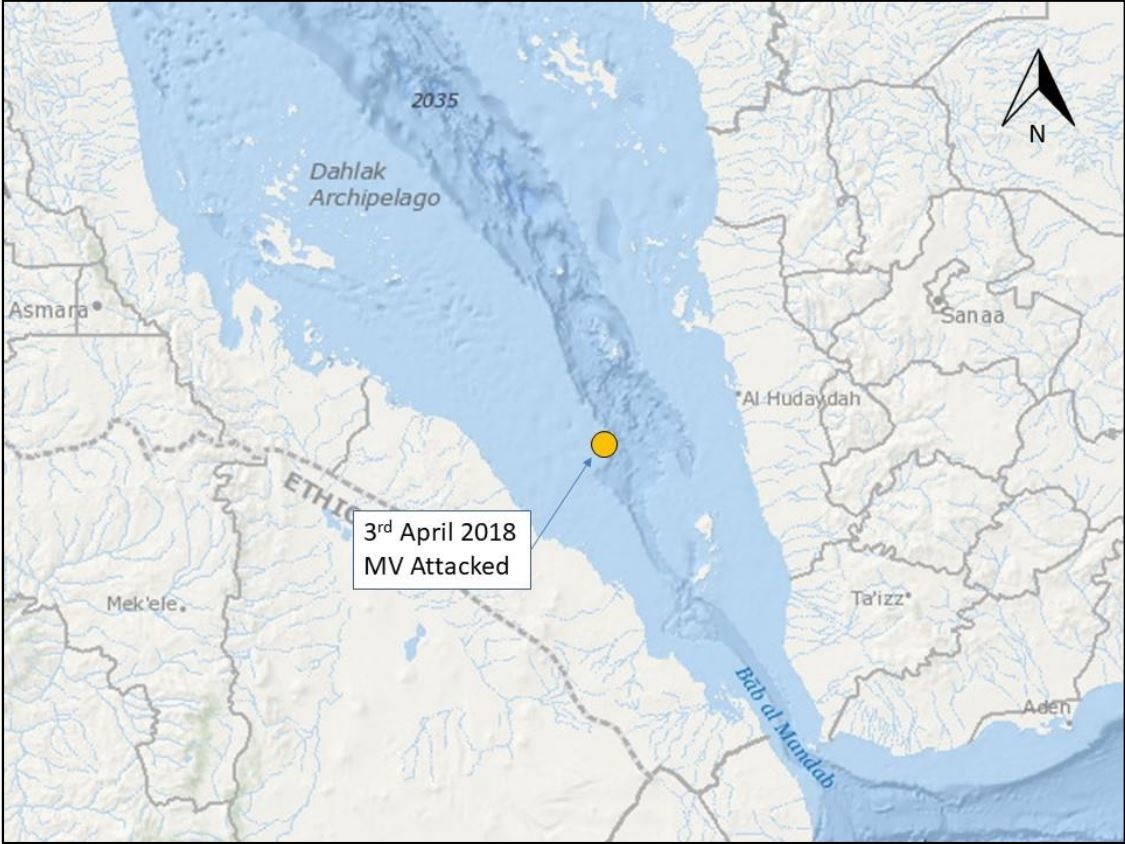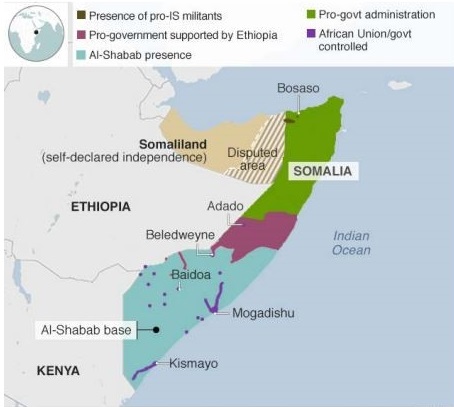Indian Ocean HRA Overview
Continued reported incidents reflect that the HRA remains a threat in regards to piracy activity in the region. Recent efforts to improve the security environment will reduce the impact of Somali piracy, however, continuing deterioration of onshore conditions in Somalia and Yemen such as famine, terrorist groups, a weak central government and poor governance of coastal areas continue to influence piracy in the region. Pirate financiers capitalise on the chaos offering opportunities to local people. Piracy groups onshore Somalia still bear the motivation to try and carry out attacks and still with capability to target merchant vessels. Increasingly, vessels in the HRA are subjected to incidents that appear to be co-ordinated small boat piracy approaches however they choose not to ultimately attack. These incidents are then difficult to classify as attempted piracy or simply as regional patterns of life in the area. However, as seen in recent months there have been numerous attacks and attempted boarding’s ranging from incidents in the Somali Basin, Gulf of Oman, Gulf of Aden and the Southern Red Sea. The increased presence of naval patrols and armed security on board vessels act as a deterrent to the threat of piracy, however those vessels transiting in the area without the presence of armed security remain a significant risk.
Reported Incidents HRA – 2 incidents to report (UKMTO)
Attack – Gulf of Aden
Incident details: On the 31st March 2018 at 0535 UTC an MV in posn 1357N 05143E was fired upon by 2 skiffs, AST returned fire and skiffs moved away. Vessel and crew are safe. Vessels transiting in the area are advised to exercise extreme caution. (Source: UKMTO)
Intelligence Comments: Reported incidents, although few and far between, over the past month have been concentrated in and around the Bab-el-Mandeb strait and Gulf of Aden. This incident was located in the region of Eastern Yemen, namely Al Mahra and Hadramawt Districts. Eastern Yemen has been a major attraction point for weapons smuggling. The ports in the region are poorly governed and are used as key entry points for smuggled goods, including arms. In addition, pirate groups are also known to operate in the coastal regions of Puntland Somalia, namely Eyl. The incident is difficult to assess with limited information as to whether it is attributed to regional patterns of life, illicit activity or Somali piracy. However later reporting stated the skiffs were equipped with ladders suggesting possible piracy activity. It should be noted that as the Indian Ocean enters into the inter-monsoon period, favourable weather conditions may see another surge in piracy related activity as was seen in the previous period in March – May 2017. Extreme caution must be exercised.
Attack – Southern Red Sea
Incident details: On 03 April 2018 at approximately 0915UTC a Merchant Vessel reported an explosion in position: 1429.3N 04211.2E (100nm west of Hodeidah, Yemen, Southern Red Sea). A Kingdom of Saudi Arabia (KSA) flagged merchant vessel initially reported a detonation and then light plumes of smoke emanating from the bow on the starboard side forward of the bridge at 030915Z. Follow on reporting indicated that a possible projectile had penetrated the starboard bow above the waterline. The possible projectile created a hole through the starboard bow with minimal external damage (MSCHOA and UKMTO).
Intelligence Comments: This is the first attack by the Houthi militants on any vessels passing through the key choke point between the Arabian Peninsula and Horn of Africa. The targeted tanker was slightly damaged, but able to continue along its course, escorted by a coalition vessel. The attack on the oil tanker follows a recent escalation in the conflict. Last week, the Houthis fired a barrage of seven missiles at Saudi Arabia, including three at Riyadh and Jizan. Recognising the economic stakes for one of the world’s biggest oil exporters, the Houthis have targeted Saudi oil infrastructure before, and have vowed specifically to target Saudi tankers near Hodeidah.
Houthi officials have previously threatened to block the vital shipping lane through the Red Sea, saying they would take “strategic choices” if the coalition continued its efforts in the Hodeidah province. Last month, the Houthi rebels claimed to have fired a missile at facilities run by the state-owned oil giant Aramco, but the company denied that its operations were affected. In April 2017, a Houthi remote-controlled boat fitted with an explosive attempted an attack on an Aramco oil distribution terminal, but Saudi forces blew it up before it reached its target, according to
Saudi authorities.
Tracking information suggests that the vessel was the AQBAIQ (IMO: 9247182) a VLCC, currently carrying around 2 million barrels of crude. According to data, the tanker was travelling past Hodeidah and briefly changed course due to the failed attack. The vessel is now on its way to Ain Sukhna in Egypt which is the main offloading point for the SUMED pipeline into the Mediterranean. The bulk of Europe’s crude oil imports from the Middle East arrive through this key pipeline.
Security experts played down the wider threat posed to oil tankers in the region following the attack. The real threat is escalation of international involvement. The more sophisticat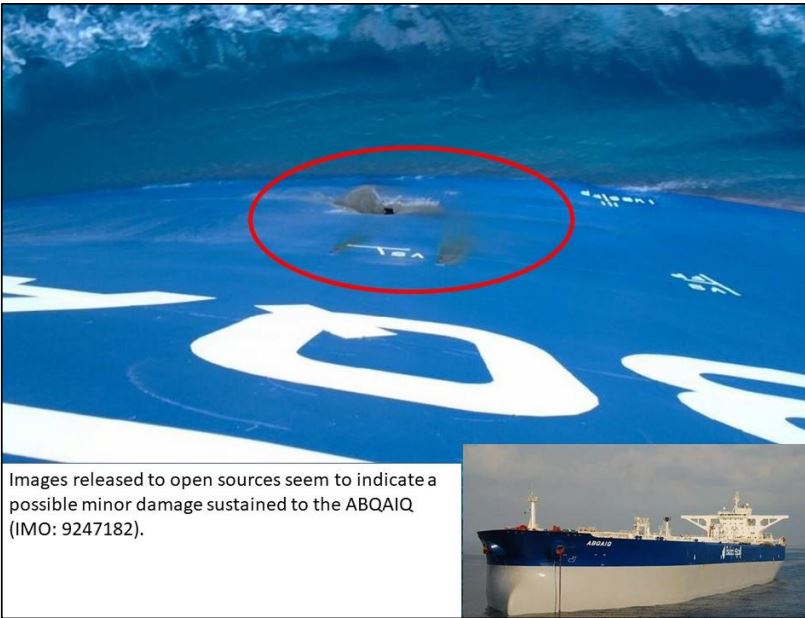
While the coalition described the damage to the tanker as minor, the assault appeared to be the first time since the war began in 2015 that the Houthis have caused significant damage to a ship carrying Saudi oil. There have been other incidents in recent years where rocket-propelled grenades were fired at tankers near the Bab el-Mandeb, but it wasn’t clear who was responsible.
Tuesday’s failed attack also confirms that the Hodeidah port continues to be used as a launchpad for terrorist acts and arms and rocket smuggling operations. The continuation of such attacks proves the danger of the Houthi militias and their backers to regional and international security. The Houthis have vowed to step up attacks on the Kingdom so further escalations are expected, both on land and on the maritime domain.
Yemen Update
This Week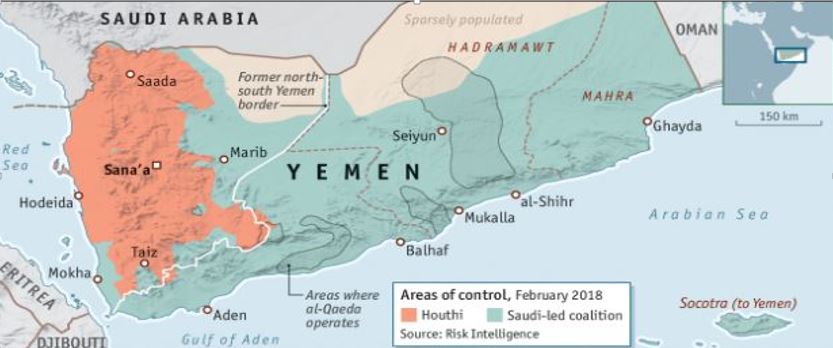
Air strike kills 12 civilians near Yemeni port of Hodeidah: On the 2nd April an air strike near Hodeidah killed at least 12 civilians. Hodeidahis responsible for over 80% of Yemen’s imports and from where most of the humanitarian aid reaches millions of civilians. The operation of the port, controlled by Houthi rebels was not affected by the air strike.
Huge fire destroys aid supplies at Hodeidah port: The fire engulfed the world food programme warehouses full of cooking fuel and food supplies. At the moment the cause remains unknown. Hodeidah port, situated on the Red Sea handles the bulk of Yemen’s imports, including food and aid supplies.
Arab coalition – weapons smuggled to Yemen’s rebels come from Lebanon’s Hezbollah stronghold: The Arab coalition stated on Thursday 29th March that weapons sent to Houthi rebels in Yemen are smuggled from Lebanon’s southern suburb of Beirut, a stronghold of the Iranian-backed Hezbollah group. Col Al Malki stated that ‘The smuggling of the weapons did not start in Iran. It started in the suburbs of Beirut and goes all the way to Syria, it goes to Iran and through the sea it comes to… Yemen.’
Ongoing Threat of Violence/Terrorism at Sea off the Coast of Yemen
- Yemen’s civil war has created an environment mirroring Somalia’s lawlessness. The ongoing conflict in Yemen demonstrates how poor security on land has led to violence spilling out into the maritime domain. Houthi rebels continue to control a large amount of Yemen’s red sea coastline.
- In relation to coalition forces advancing towards the Red Sea port city of Hudaydah, currently under Houthi rebel control, increases the risk to shipping in the region. In the past Houthi rebels have repeatedly threatened to attack merchant vessels in the region should coalition forces attempt to re-take Hudaydah port. If coalition forces seized Hudaydah it could be argued this would be a turning point in the civil war as the Houthi rebels would lose their main source of finance through the port in which illegal arms are smuggled.
- Unconfirmed reports surfaced on the 7th January 2018 stating that the Saudi coalition had destroyed at least one Houthi vessel near Hudaydah port after an alleged attack occurred against a Saudi oil tanker. The vessel was reported to be loaded with explosives and controlled remotely.
- The threat of terrorism at sea off the coast of Yemen remains by rebel groups and terrorist organisations such as AQAP remains. Such is highlighted by attacks against the LNG Tanker Galacia Spirit in October 2016 and the MT Muskie a product tanker in May 2017. Both involved the use of explosive laden skiffs, as an attempt to cause major devastation in the critical international shipping passage of the Bab-el-Mandeb.
- It continues to be a persistent threat that merchant vessels may be the subject of a miscalculated attack or as has been suggested recently, possibly threats of a calculated attack.
- The continued proliferation of weapons in Yemen increases the possibility that rebel and other groups may seek to conduct an attack against shipping using WBIED’s.
Somalia Update
This Week
Al Shabaab attacks an African Union base in Somalia: Al Shabaab militants attacked an African Union peacekeeper base in the town of Bulamarer, 130km southwest of the capital Mogadishu. Since withdrawing from Mogadishu in 2011, al Shabaab has lost control of most cities and towns but still retains a strong presence in regions outside the capital.
Al Shabaab has been increasingly active in Somalia in recent months. The militant group has been battling the Somali Federal Government (SFG) in an effort to govern Somalia. Since 2013, al Shabaab pledged allegiance to al-Qaeda attracting the United States to execute raids and airstrikes against the group. However increased US airstrikes have not enabled African Union Mission (AMISOM) and Somali security forces to gain enough momentum against the terrorist group, al Shabaab has not suffered any great loss of territory or significant casualties from the airstrikes. Al Shabaab continues to maintain strongholds in southern and central Somalia and continue to carry out attacks against military and civilian targets. Somalia is a country whereby tribal loyalties are stronger than national ties. The SFG and Somali forces lack legitimacy outside of Mogadishu. Further to this, al Shabaab further exemplifies the issue of famine, terrorism and corruption making the prospect of stability in Somalia in the near future bleak. Al Shabaab is likely to maintain its present operational tempo in 2018 and further expand its territory in central and southern Somalia.
Piracy
In 2017 between March and May, five vessels were hijacked in Somali waters, whilst this was reported by many to be a resurgence of Somali piracy, it can be assessed as more likely to be a result of a permissive environment during the inter-monsoon period allowing skiffs and PAGS to operate with ease. Until the deep rooted issue of piracy in Somalia are resolved, piracy will continue to be a threat. 2017 saw the worst drought Somalia has seen in 40 years, this coupled with the struggling government and extreme militant violence has brought 6.7 million people into crisis. Pirate financiers capitalise on the chaos offering opportunities to local people. Pirate groups are known to operate in the coastal regions of Puntland, namely Eyl and further south in the Galmudug region, namely Hobyo. It is needless to say, as the increased instability in Somalia continues, it will serve as a permissive environment for piracy operations with an ongoing threat to shipping in the region.

